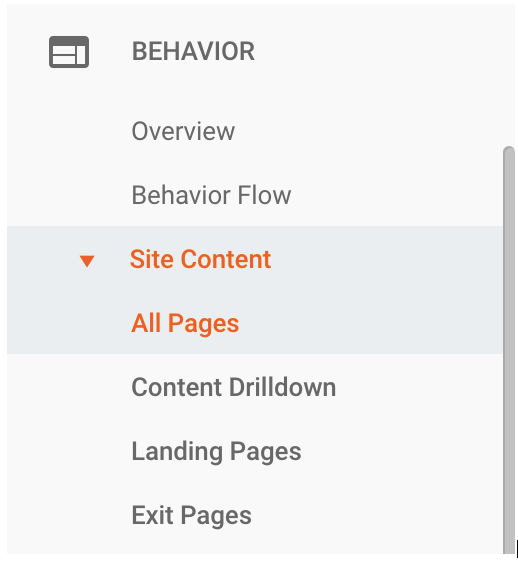“What do millennials want?”
It’s a question that could go on for ages, and it’s been debated almost to death in articles online - but it’s also a question that many advisors find themselves asking as they look to connect with millennial clients.
It’s no surprise either, since the eldest millennials, born in the early 80s, are starting to hit their stride when it comes to careers and family formation - and they’re looking for advice on how to navigate it, specifically with regards to their finances.
If you want to be the person they find, and connect with, writing blog posts that uniquely appeal to and capture the attention of millennials is a great place to start. Here’s a five-step process on how to do exactly that - and then watch the new millennial clients start to come in the door.
Step 1. Know your audience
Sure, you want to engage millennials, but you probably don’t want to engage every millennial. There’s a big difference between creating content that will resonate with a 24-year-old in an entry-level job whose main financial goal is attending a big music festival, and creating content that will help a newly-minted doctor handle their student debt loads and resident salary at the same time.
Both of those people are millennials, but they’re very different millennials. The first step to creating content that will resonate with millennials is knowing which ones you’re targeting.
To narrow down your ideal millennial audience, consider the following.
- How old are they?
- How much education have they obtained?
- What kind of job do they have?
- How much money do they make?
- What is their debt situation?
- What are their goals?
- What are they currently struggling with, financially speaking?
- How do they currently manage their money?
Once you’ve got answers to those questions, you’ll have a much better idea of which kind of millennial you want to connect with, and that’s the best first step towards creating content that will resonate with them.
Step 2. Do some research
Once you have a good overview of who your ideal millennial audience is, it’s time to do a bit more research to validate what they care about, and what topics are on their mind when it comes to their finances.
This could be as simple as opening up the notes you took during initial calls with millennial clients who you’ve worked with in the past, and looking through the answers to questions like “What made you look for financial advice in the first place?” If you don’t have a wealth of notes to pull from, however, the internet is your friend.
You can use social media and search engines to find out how millennials in your target market are talking about their financial problems.
On any search engine (think Google, Youtube and Pinterest) you can start to type in phrases like “how to save more money for” and the search engine’s autocomplete function will add in the most popular endings to the phrase.
Here are screenshots of the most popular searches that show up on each one for that phrase.
Youtube



Which search engines you focus on will depend on who your audience is, and what types of content resonate with them. But whichever one you choose, you’ll be able to see what the most popular content (as ranked by the search engines) looks like, and what kind of comments people left. Often, they’ll leave additional comments with questions as follow ups, and that will be a great source of ideas for helpful content you can create for a millennial audience - who tends to turn to the internet when they have questions.
Step 3. Build a plan
Now that you know your audience, and you have an idea of what kind of content they’re searching for and how they’re talking about it, pick a few core topics you think would interest them, and outline when you’re going to create the content - and what format you’ll create it in.
Maybe you hate writing, but have no problem getting in front of a video camera. If that’s the case, video might be a great content fit for you. On the other hand, if getting on camera makes you queasy, video is not a must-have line item in your content calendar.
Next up, outline each piece of content (video or written blog posts) before you create it. Your outline should include a headline (or a few headline ideas), the main points you want to cover in the article, the core takeaway you want your audience to get, and any images or multimedia you need to find.
Step 4. Promote, promote, promote
There are very few cases where a “build it and they will come” approach works these days. A promotional plan is a must to make sure your content gets in front of audiences, and doesn’t just sit on your website, getting a few clicks every week.
Once you’ve got a piece of content published, you should have a plan in place for how you’re going to promote it. This could include a mix of social media platforms, email marketing, paid placements and personal outreach, depending on where your target millennial market reads and finds content.
Step 5. Evaluate
Lastly, if you’re spending all of that time creating content in the hopes of engaging a millennial audience, you’ll want to check in on it afterwards to see if you actually achieved your goal.
The only thing you’ll need to do to figure this out is head in to your Google Analytics dashboard. To find out how your content performed, take a look at your overall traffic, and which posts received the most attention over the past month. You’ll want to set your time frame to the past 30 days, and then navigate to Behaviour > Site Content > All Pages within Google Analytics.

This will give you a quick look at the top ten pages on your website for the past 30 days, and you should see some of your blog posts in there. Which ones are showing up near the top of the traffic heap? That should give you a good idea of which topics resonated the most with your audience - and beyond just validation that they were good ideas, it might even spark additional topics you could cover that would be similar.
For example, if one of your most popular posts was a case study about how one millennial managed to save up a down payment for a house, you could turn that into a series in which you feature different ways to save up for a down payment.
Last but not least, you can also look at the demographics of who’s checking out your website. To find out whether millennials are reading your content, go to Audience > Demographics > Overview within your Google Analytics account.
You’ll see a bar graph showing you which percent of people, by age range, are on your site. You’ll want to look at the 25-34 age bracket, and keep tabs on it over time, to see how many millennials are really on your site, and reading your content.
By Lester Tiro
Lester Tiro is the Partnership Manager for Advisor Websites where he manages the company’s relationship with other industry leaders and educates financial services professionals on how to maximize the potential of a strong web presence.
Interested in learning more about the content marketing and websites for your financial practice? Be sure to book your 1:1 demo with one of our experts today!

.jpeg)





.png)

